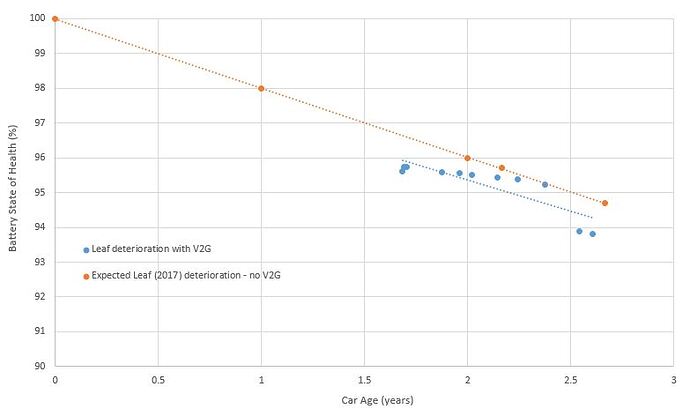I can follow your reasoning Phillipe.
I am here for V2H not V2G - so I want to use the car to power my home, not help grid activities.
The grid might supply the battery at certain times but it is mostly to go around moments of high tariffs - see below.
The C-level draw of this activity on the battery are minimal compared to what the car is build for - I cannot see how it would affect your battery.
100% feed in tariff stops here in the Netherlands per end of 2024.
New wind parks on the North Sea come online - one started last week.
More and more hours of energy surplus are being generated from that source.
It is reasonable to assume these moments will get more and more often also in wintertime.
There are now energy suppliers that cater to that scenario - (Energy Zero, and they are white label for ANWB Energie and MijnDomein Energie)
So you pay a hefty price when using energy on hours of high demand and more or less get it for free on hours of low demand or hours of energy surplus.
Rules and regulations are in development where you have to give notice (not correct English I fear!) to the local fire brigade when you have more than 0,8 kW electricity storage in the home. No one is enforcing this of yet but this is coming.
Your car, and in particular the Nissan Leafs and ENV’s, Outlanders, Miev/C Zero etc. are then a fairly cheap way to get this going.
I upgraded our Nissan Leaf to a 85kWh battery - I don’t believe it has NMC chemistry but I could be wrong.
I agree that the Quasar is a lot of money.
The Indra is another device that seems to work.
Scale is the name of the game here.
I made inquiries into quite a few suppliers of similar devices mentioned on chademo.com.
Mostly vapor ware including leading brands like ABB (who build a very nice device indeed - but helas, not for sale…)
It is therefore that I asked about a chademo / DC version of openEVSE/emonEVSE.
For now it seems too much to ask but who knows maybe some clever engineer comes up with a kit or a design for a kit.
We have two years from now to get this going - it seems like a smart way to go - especially for all-electric homes.
It might be cost prohibitive for now, but that situation might change quickly.
Best regards,
Antoine
